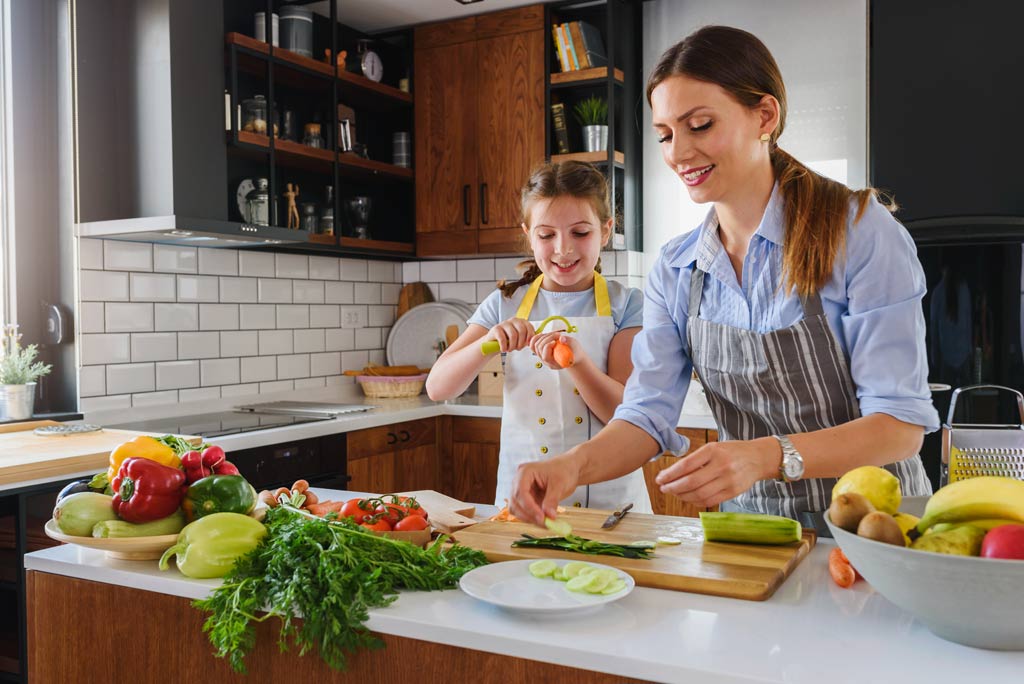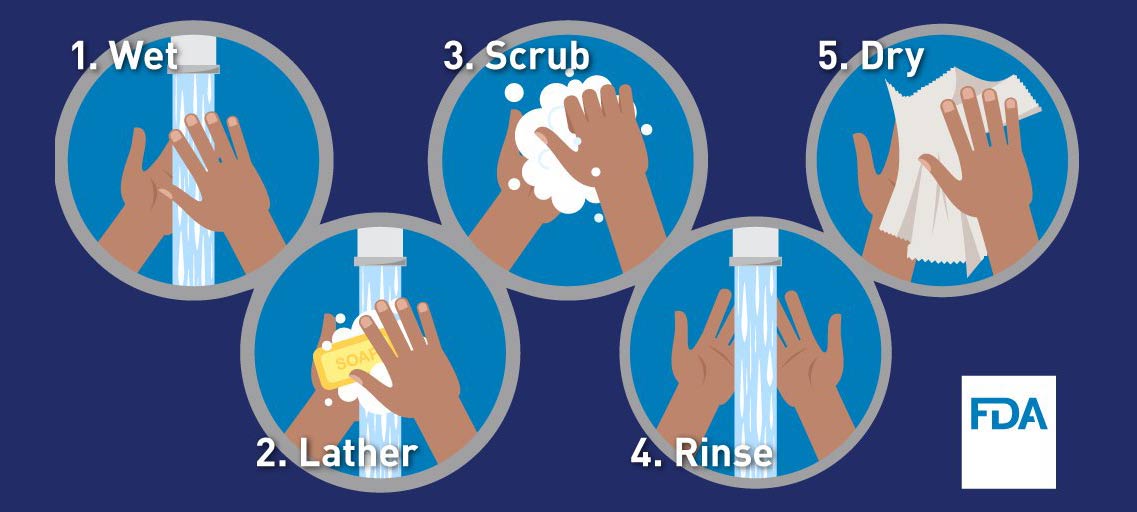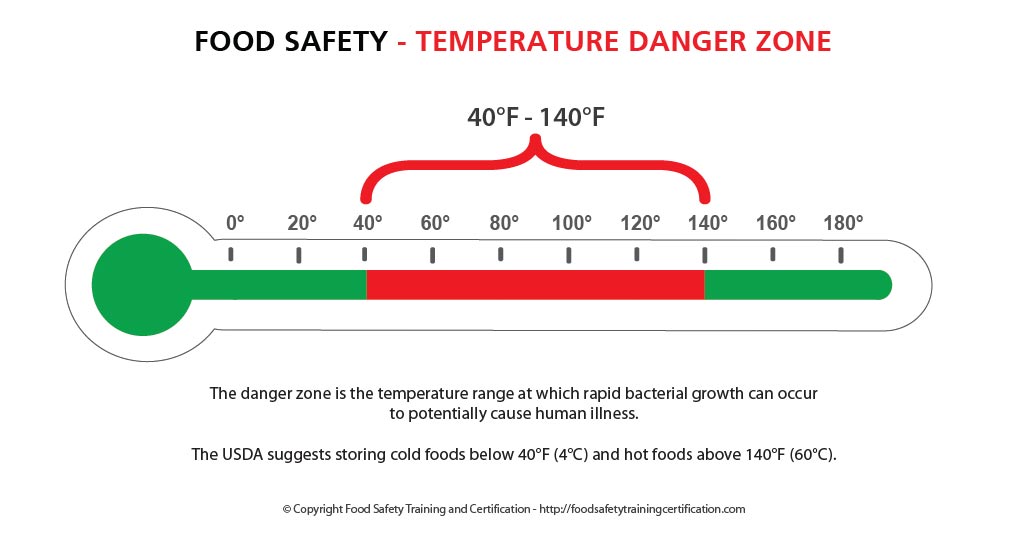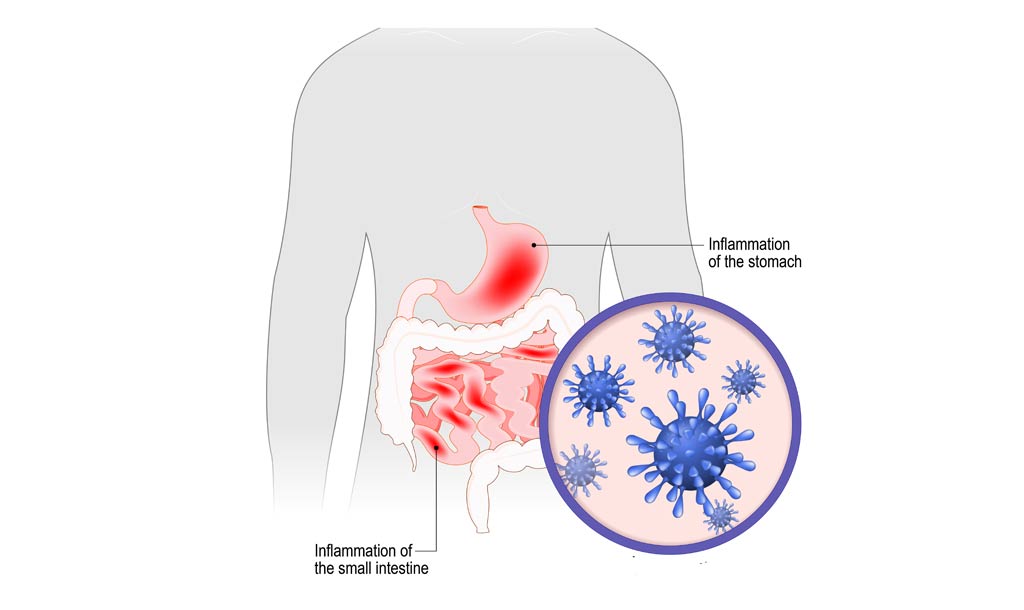Many children and families today have busy schedules. This makes it hard to stop and have a serious conversation about diet, nutrition, and food safety – in order to live a healthy life and avoid illness or disease.
Have a conversation about food safety with you children – no matter the age. Basic discussion topics can make a big difference in understanding and preventing a food illness.
Follow basic food safety principles and procedures to help keep you and your family safe.

Take a little bit of time to learn more about food safety – whether you’re cooking and eating at home, outside the house, or on the go.
- Learn about foodborne hazards and pathogens, cross contamination, temperature controls, cleaning and sanitation methods, and the best practices to prevent foodborne illnesses.
- Food Manager (Level 2) Certification: SALE $99.00
- Person-in-Charge (Level 1) Certification $10.00
- Enter Promo "train10off" at Checkout
FDA Video: Food Safety in Seconds
Food Safety Steps: Clean – Separate – Cook – Chill
Bacteria that contaminate food and cause foodborne illnesses are everywhere. Follow these basic safety tips to keep you safe.
- Clean. Wash hands and surfaces often.
- Separate. Don’t cross-contaminate. Keep raw meat, poultry, eggs and seafood, and their juices, away from ready-to-eat foods.
- Cook. Raw meat, poultry, seafood and egg products need to be cooked to the right temperature. Use a food thermometer to ensure foods have reached a high enough temperature to kill any harmful bacteria that may be present.
- Chill. Refrigerate food promptly. Do not leave food at room temperature for more than two hours, or one hour when the outside temperature is above 90°F (32.2°C).

Clean
Wash your hands often, especially during these key times when germs can spread.
Follow the five steps below to wash your hands the right way every time:
- Wet your hands with clean, running water (warm or cold), turn off the tap, and apply soap.
- Lather your hands by rubbing them together with the soap. Be sure to lather the backs of your hands, between your fingers, and under your nails.
- Scrub your hands for at least 20 seconds. Need a timer? Hum the “Happy Birthday” song from beginning to end twice.
- Rinse your hands well under clean, running water.
- Dry your hands using a clean towel or air dry them.
Keep kitchen surfaces clean by washing counters, cutting boards and equipment with soap and water immediately after use. Sanitize with a chlorine solution of 1 teaspoon liquid household bleach per quart of water, especially after contact with raw meats.

Separate
Use separate cutting boards and plates for produce, meat, poultry, seafood, and eggs to prevent cross-contamination:
- Use one cutting board for fresh produce or other foods that won’t be cooked before they’re eaten, and another for raw meat, poultry, or seafood. Replace them when they are worn.
- Use separate plates and utensils for cooked and raw foods.
- Wash thoroughly all plates, utensils, and cutting boards that touched raw meat, poultry, seafood, or eggs before using them again. Use hot, soapy water.

Cook
Using a thermometer is the only reliable way to ensure safety and to determine that meat and egg dishes are cooked thoroughly. These foods must be cooked to an internal temperature high enough to destroy any harmful bacteria that may have been in the food.
Color changes in meat are no longer considered reliable proof that all bacteria have been destroyed. Use the temperature chart on the last page to determine if foods have been cooked thoroughly.
FDA: Safe Minimum Cooking Temperatures
| Food | Type | Internal Temperature (°F) |
|---|---|---|
| Ground meat and meat mixtures | Beef, pork, veal, lamb | 160 |
| Turkey, chicken | 165 | |
| Fresh beef, veal, lamb | Steaks, roasts, chops Rest time: 3 minutes |
145 |
| Poultry | All Poultry (breasts, whole bird, legs, thighs, wings, ground poultry, giblets, and stuffing) | 165 |
| Pork and ham | Fresh pork, including fresh ham Rest time: 3 minutes |
145 |
| Precooked ham (to reheat) Note: Reheat cooked hams packaged in USDA-inspected plants to 140°F |
165 | |
| Eggs and egg dishes | Eggs | Cook until yolk and white are firm |
| Egg dishes (such as frittata, quiche) | 160 | |
| Leftovers and casseroles | Leftovers and casseroles | 165 |
| Seafood | Fish with fins | 145 or cook until flesh is opaque and separates easily with a fork |
| Shrimp, lobster, crab, and scallops | Cook until flesh is pearly or white, and opaque | |
| Clams, oysters, mussels | Cook until shells open during cooking |

Bacteria “Danger Zone”
The “Danger Zone” for most foods is between 40°F and 140°F. Bacteria grow most rapidly in this range of temperatures, doubling in number in as little as 20 minutes.

Chill
| Food | Refrigerator | Freezer |
|---|---|---|
| Note: Foods kept in the freezer longer than recommended are safe, but their quality may not be as good. | ||
| Bacon (opened) | 5-7 days | Not recommended |
| Bacon (unopened) | 2 weeks | 1 month |
| Beef roasts & steaks, raw | 3-5 days | 6-12 months |
| Cheese – hard types | 6-12 weeks | 6-12 months |
| Cheese spreads | 3-4 weeks | Not recommended |
| Deli-sliced luncheon meats | 3-5 days | 1-2 months |
| Eggs – fresh in shell | 3-5 weeks | Not recommended |
| Eggs – hard-cooked | 1 week | Not recommended |
| Egg, tuna and macaroni salads | 3-5 days | Salads made with mayonnaise do not freeze well. |
| Gravy and meat broth | 1-2 days | 2-3 months |
| Ground beef & stew meat, raw | 1-2 days | 3-4 months |
| Ham slices (fully cooked) | 3-4 days | 1-2 months |
| Hotdogs and luncheon meats (unopened) | 2 weeks | 1-2 months |
| Hotdogs, luncheon meats (opened) | 3-7 days | 1-2 months |
| Ice cream | 2 months | |
| Meat (cooked) | 3-4 days | 2-3 months |
| Milk (fresh) | 5-7 days | Not recommended |
| Pizza | 3-4 days | 4-6 months |
| Pork roasts & chops, raw | 3-5 days | 4-6 months |
| Poultry (cooked) | 3-4 days | 4-6 months |
| Poultry (raw) | 1-2 days | 9-12 months |
| Salad dressings (opened) | 3 months | Not recommended |
| Soup – meat added | 1-2 days | 2-3 months |
| Soup – vegetable | 3-4 days | 2-3 months |
| Yogurt | 7 days | Not recommended |
| Fruits (fresh): | ||
| Apples | 3 weeks | Fruits may need ascorbic acid to prevent browning when frozen, and the addition of sugar for best quality. Store in freezer containers. |
| Grapefruit, lemons, limes, oranges | 2 weeks | |
| Melons | 1 week | |
| Grapes, peaches, pears, plums | 3-5 days | |
| Berries, cherries | 2-3 days | |
| Vegetables (fresh): | ||
| Carrots | 2 weeks | Most vegetables need to be blanched or cooked before freezing to maintain quality. |
| Celery, cabbage, chilies, lettuce head (unwashed), peppers, tomatoes | 1 week | |
| Beans, broccoli, greens, peas, summer squash | 3-5 days | |
| Mushrooms, okra | 1-2 days | |
Food Illness Symptoms
The symptoms of foodborne illness often come on quickly, usually within hours to a day and can last for up to a few days.
Typical symptoms include:
- abdominal pain
- nausea
- vomiting
- diarrhea
- chills
- fever
- muscle pain
- dehydration
- bloody stool
In some cases, foodborne illness can lead to serious conditions. Children younger than 5 years of age, adults aged 65 and older, people with weakened immune systems, and pregnant women are more likely to develop a serious illness.
Call or see the doctor if you or someone in your care has serious symptoms.

Additional Food Safety Resources
- Recalls.gov: Online Resource for Federal Recalls (Federal and Industry Initiated Recalls) Recalls.gov
- U.S. Centers for Disease Control and Prevention (CDC), Division of Bacterial and Mycotic Diseases, Food Safety Initiative
www.cdc.gov/foodsafety
Agents, Diseases, & Other Threats
Food Safety Activities
News and Media Relations - U.S. Food and Drug Administration, Directory of State and Local Officials
www.fda.gov/ora/fed_state/directorytable.htm - U.S. Food and Drug Administration, Hazard Analysis and Critical Control Point Database
vm.cfsan.fda.gov/%7Elrd/haccp.html - U.S. Department of Agriculture (USDA)
www.usda.gov - U.S. Department of Agriculture, Food Safety and Inspection Service (FSIS)
www.fsis.usda.gov - U.S. Department of Health and Human Services (HHS)
www.hhs.gov - USDA/FDA Foodborne Illness Education Information Center
www.nal.usda.gov/foodborne - Clean (PDF 418KB) Separate (PDF 66KB) Cook (PDF 544KB) Chill (PDF 572KB)
- Limpiar (PDF 598KB) Separar (PDF 592KB) Cocinar (PDF 580KB) Enfriar (PDF 449KB)
- Food Safety in Your Kitchen
- Foodborne Illness Videos
